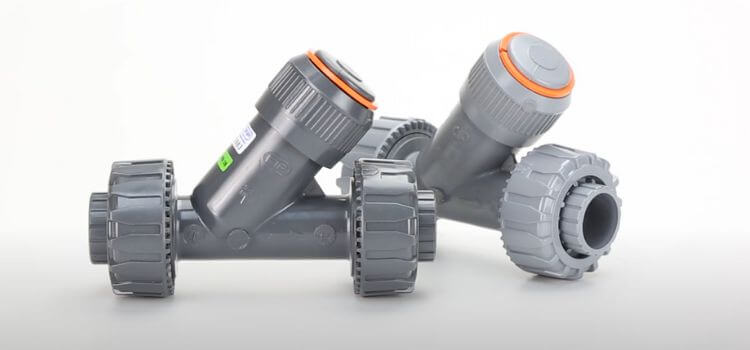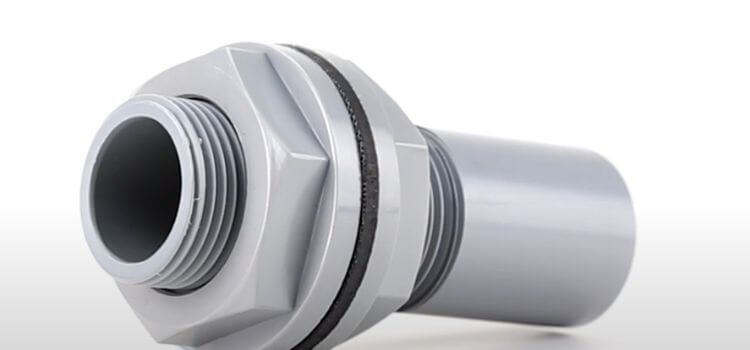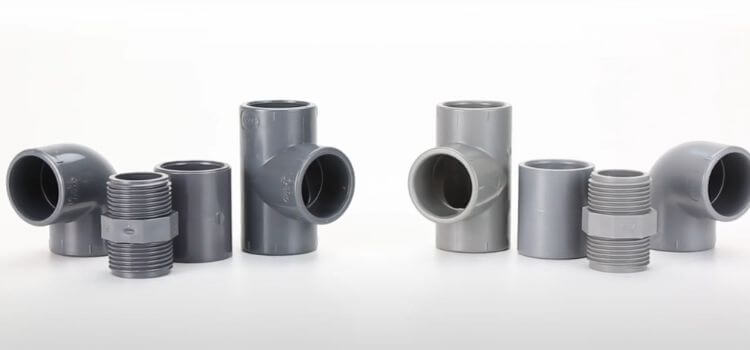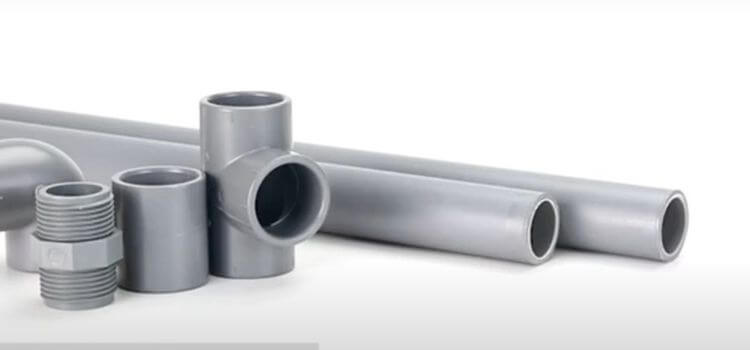ABS pipe is no longer widely used due to its susceptibility to sun damage and low resistance to extreme temperatures. It has been largely replaced by PVC and other more durable piping materials.
Acrylonitrile Butadiene Styrene, or ABS pipe, was once a popular choice for plumbing due to its lightweight nature and easy installation. However, plumbing professionals have noted that ABS can become brittle over time, especially when exposed to direct sunlight or very cold environments.
These issues have prompted a shift towards materials that guarantee a longer lifespan and more robust performance under varying climatic conditions. As a thermoplastic, ABS stands at a disadvantage compared to PVC, which offers greater versatility and safety assurance for plumbing needs in residential and commercial buildings. The move away from ABS reflects the industry’s commitment to improving building standards and the reliability of plumbing infrastructure.

History Of Abs Pipe
ABS pipe, a once-popular choice for plumbing, has a storied past. This section delves into its origins and eventual decline in use.
Introduction To Abs Pipe
ABS stands for Acrylonitrile Butadiene Styrene, a thermoplastic resin. It emerged as a robust option for pipes. Durable and light, ABS quickly became a fixture in construction. Versatility allowed its use in diverse environments, from residential homes to commercial buildings.
Usage And Popularity
In the 1950s and 1960s, ABS pipe saw a surge in use. Its popularity peaked due to easy installation and resistance to impact. A summary of its usage includes:
- Waste removal systems
- Ventilation pipes
- Drainage solutions
Despite these advantages, ABS pipes faced issues. Exposure to sunlight could weaken the material. In some regions, building codes changed. These updates phased out ABS in favour of newer materials like PVC.
Technological advancements led to alternatives. Builders sought materials that offered better longevity and resistance. Consequently, ABS pipes experienced a decline. Today, they remain a part of plumbing history.
Disadvantages Of Abs Pipe
Exploring plumbing solutions leads to conversations about pipe materials. ABS pipe, once popular, now faces scrutiny due to various disadvantages. Understanding these can guide better decisions for both repair and new installations.
Durability Issues
ABS pipes have shown to be less resilient over time. Factors contributing to their reduced lifespan include:
- Sensitivity to prolonged sun exposure.
- Prone to cracking under extreme cold.
- More resistant to certain chemicals than its counterparts.
These pipes can fail, leading to costly replacements and potential property damage.
Environmental Concerns
The production and disposal of ABS pipes raise significant environmental issues. Notable points include:
- Emission of harmful toxins during manufacturing.
- Challenges in recycling due to its composite nature.
- Release of pollutants if burned.
This impact on the environment has shifted preference to more eco-friendly options.

Regulatory Changes
Recent regulatory changes have had a huge impact on plumbing materials. Notably, ABS (Acrylonitrile Butadiene Styrene) pipe usage has significantly declined.
Code Regulations
Building codes evolve. They ensure structures are safe and durable. ABS pipes once met the standards. Modern codes, though, are tougher and favor different materials.
Health And Safety Standards
Health concerns, a necessary catalyst for change, have prompted revisions. Standards for safe water grew stricter. Research linked ABS to certain risks. Plastics can affect water quality. New safety benchmarks emerged. ABS didn’t make the cut.
Annual reports and regulatory updates show the shift away from ABS. Experts scrutinize materials. They aim for healthier environments. Consumers demand safer pipes. Authorities responded with new replacement guidelines.
| Old Material | New Preference | Reason for Change |
|---|---|---|
| ABS Pipe | PVC or PEX | Compliance with current codes |
| Transition supported by multiple industry studies. | ||
- ABS no longer aligns with health guidelines.
- Some areas have outright banned its use in new construction.
- Alternatives offer better longevity and safety profiles.
- Check local codes before selecting plumbing materials.
- Consult professionals about safer options.
- Upgrade outdated systems to meet new standards.
In line with these changes, professionals and DIY builders adapt to the new standards. They now prefer pipes that pass stringent assessments. These include PVC or PEX piping, which is known for its health, safety, and resilience.
Alternatives To Abs Pipe
Modern plumbing demands versatile and reliable materials. ABS (Acrylonitrile Butadiene Styrene) pipes, once common in plumbing, now have superior alternatives. Two popular choices are PVC (Polyvinyl Chloride) and PEX (Cross-Linked Polyethylene). These materials come with benefits that often outshine traditional ABS pipes. Looking into PVC and PEX gives insight into why ABS is losing favour.
Introduction To Pvc And Pex
PVC, the white plastic pipe familiar in plumbing, is used for waste, vents, and drains. PEX, a flexible and colour-coded pipe, serves multiple plumbing needs. Each brings unique qualities to the table.
- PVC: Rigid, easy to cut and join
- PEX: Flexible, great for tight spaces
Advantages Over Abs
PVC and PEX have significant benefits over ABS pipes:
| Feature | PVC | PEX |
|---|---|---|
| Corrosion Resistance | Boldly resists | Excellently withstands |
| Installation Ease | Simple and user-friendly | Highly flexible and quick |
| Temperature Tolerance | Handles moderate temperatures | Brilliantly adapts to hot/cold |
| Lifespan and Durability | Robust, stays long-term | Reliable, lasts for decades |
| Cost Effectiveness | Affordable, less expensive | Value-rich, reduces labor |
PVC and PEX effectively tackle plumbing challenges. Their resilience to various conditions and cost-effectiveness make them preferred choices. PEX’s flexibility allows for easier retrofitting and repairs, while PVC’s straightforward installation appeals to DIY enthusiasts. As such, both serve as formidable replacements for ABS pipes in modern plumbing systems.

Frequently Asked Questions
Why Did They Stop Using Abs Pipe?
Manufacturers shifted from ABS to PVC pipe due to better chemical resistance, enhanced durability, and improved material stability. ABS faced issues with sunlight degradation and was less suitable for certain plumbing applications.
What Is The Problem With Abs Pipes?
ABS pipes can become brittle over time, potentially leading to cracks and leaks. They may also warp with exposure to sunlight.
What Are The Disadvantages Of Abs Pipes?
ABS pipes can become brittle over time, are less resistant to sun exposure, and may deform under high temperatures. They also have a lower psi rating compared to PVC pipes, limiting their use for high-pressure systems.
What States Banned Abs Pipe?
Several states have restrictions on ABS pipe usage due to its chemical properties. For the most up-to-date list of states where ABS pipe is banned, you should check local building codes and plumbing standards, as these can change over time.
Conclusion
As regulations and requirements have evolved, ABS pipe’s popularity has waned. Health and environmental concerns combined with advancements in piping materials mean ABS is less favourable. It’s essential to consult current building codes and seek modern alternatives for safe, durable plumbing solutions.

